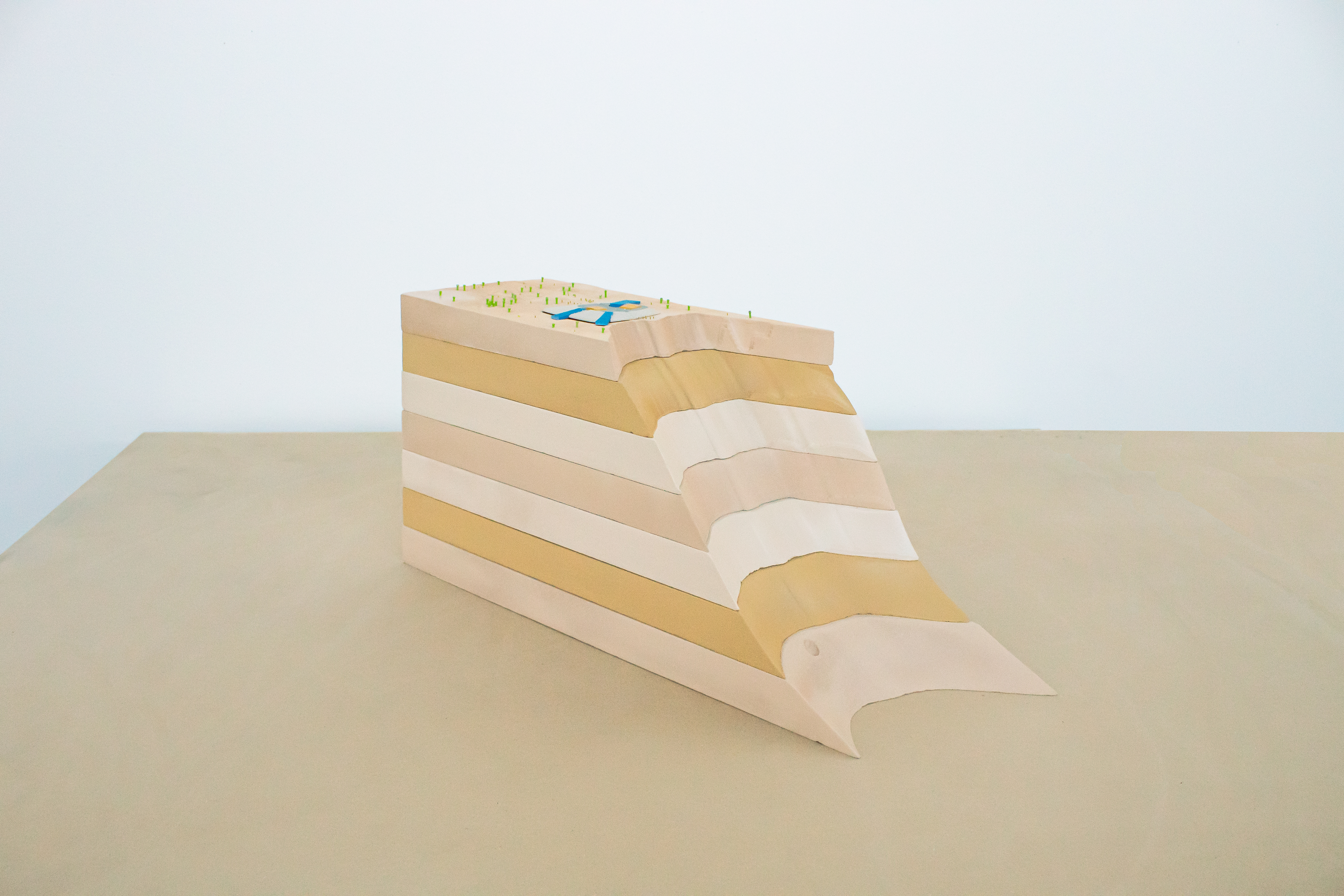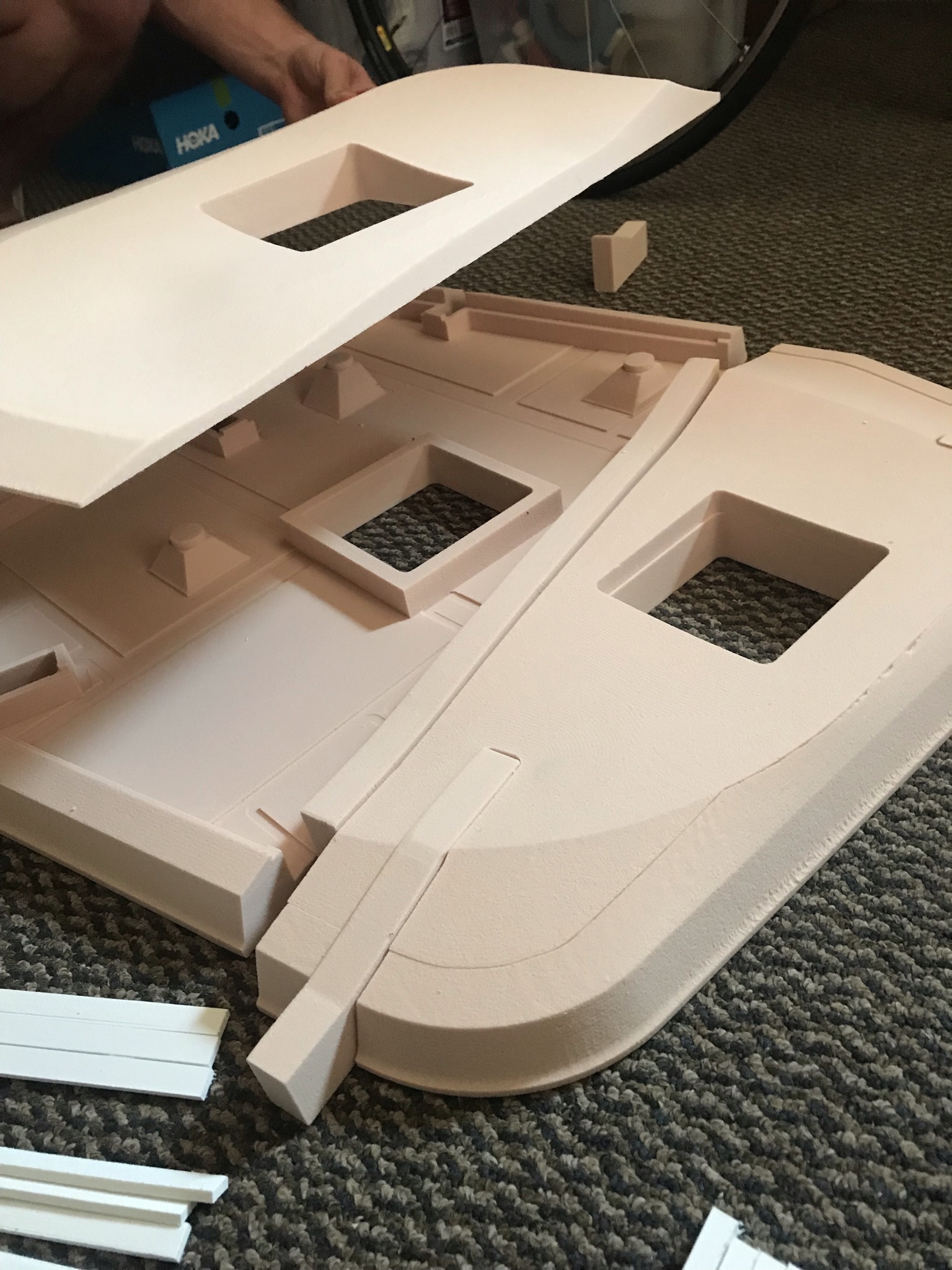01. TOWARDS REMEDIATION
If remediation brings unusable land back into circulation, the program begins to speculate on how this land and its ownership might look in a different system. A space for the collaboration and interaction between multiple sovereign entities, indigenous peoples and the federal government is proposed

An analysis and archive of existing mound sites was developing, forming a policy towards creation. The form acknowledges the idea that an archive is inherent in every artistic endeavor. Through the historical archive of the mound, a series of rules of what a mound is and is not has been developed. Through various casts, angle of repose models and drawing methods, various disposal cells were investigated and a technique towards design was set forth.




02. SUBTRACTION
Earlier studies developed a method of subtraction for synthesizing the form and program of a mound as well as determining how one might be formed. Keep in mind that while the mound is site specific, there are 4,000 other such sites in America alone that also might qualify for attention.








03. A PROGRAM OF REMEDIATION




Here we see the plan as the marriage of the two wings or distinct programs into a mound that acts as an outpost on the rim of the canyon. Rather than a permanent blemish on the landscape, this mound is made up of a large dismantable truss system that rises above permanent walls, housing fixed program. Upon descending into the scraped surface of the site one enters either side of the structure through an interior courtyard. One wing holds a dormitory for 50 seasonal workers in the national park, the other provides a desert research lab and space for gatherings between the 10 historic tribes of the area, something not yet available on federal park lands.



04. SITUATED
Ramps allow visitor access to viewing platforms viewing the canyon from a slightly elevated position. A central internal ramp takes one from the flat plateau into the space of the mound below.









05. DISCRETENESS
Something that was important for the project is that this mound was not seen as a pristine digital roof project but rather gave a distinct correlation between parts and whole, further emphasizing a question of what constitutes a mound, one grain of sand or a million.







06. SCRAPING THE GROUND
The formation of the mound is brought about by understanding reclamation to mean the containment of contaminated soils leftover from the mine tailings. There has been a partial cleanup of large items. In order to provide a completely safe place for habitation, much of the remaining soil down to bedrock must be scraped away and safely stored until the halflife of uranium-238 expires-1,600-70,000 years in the future.
If we zoom in on earlier sections of previous disposal cells we see the layers of soils that are simply buried and capped.
The scraping of the earth at this site results in soils that must be stored somewhere. The modernist way of dealing with this was to bury it far out of sight and let it be a later worry. What if instead of putting the stuff off limits we rethought our relationship to waste and toxicity.
Instead of piles of earth, I’m interested in some of the mounds and their qualities that involve stacking and relentless repetition of discrete elements. Using the sandbag as a stackable, repetitive, dismantable element, I’ve hypothesized how different materials might contain and shield radiation from entering the groundwater and users of the site. Think xray aprons in hospitals made from lead and cloth, or space foil on spacecraft protecting against the same radioactive qualities found in the soil at the Orphan Lode Mine, or even Hazmat suits that we wear in dangerous proximity to these materials. Instead of removing the dangerous materials to an even more remote site, the materials would be used in the production of the mound itself.











07. STACKING AND PROTECTION









08. SECTION
This model, which I call the clamshell, begins to show the act of dismantling the mound. Whereas earlier disposal cells are thought of lasting eternities, this begs the question, what if the mound were not so permanent. What if the bags were removed at some point and reused or reprocessed with new technologies, what if they were taken to a museum? Large figures embedded in the roof are the items that remain.The permanent spaces are top lit, while the other spaces are covered and mounded with bags.




09. A CHUNK




10. TO COME ACROSS A MOUND IN THE WOODS
